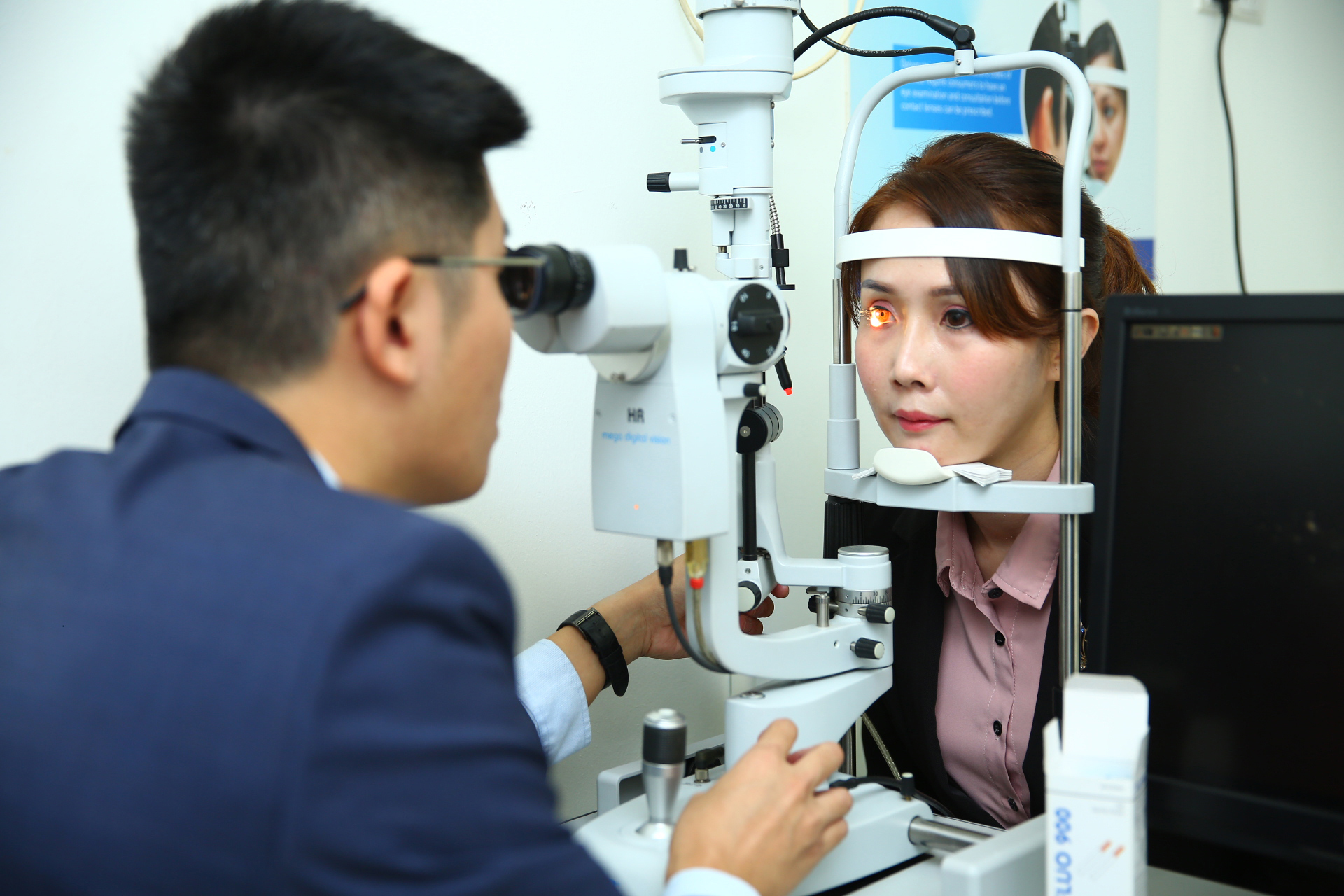What is Contact Lens Fitting?
Contact lens fitting is more than just determining your prescription; it’s a comprehensive evaluation of your eye’s surface, shape, and health to find the most suitable type of contact lens. This process is vital as it affects how well the lens fits, moves, and allows for adequate oxygen transmission to the cornea. Most of all to prevent any contact lens complication that may arise due to improper fitting.
Steps in the Fitting Process
- Initial Eye Examination: Comprehensive eye examinations done by Optometrist tailored to your individual needs and lifestyle, ensuring precise vision correction.
- Tailored Lens Selection: Choosing suitable contact lens ranging from soft lenses to precise rigid gas permeable (RGP) lenses and even specialized options for astigmatism or presbyopia, that will suit your lifestyle.
- Trial Fitting: Ensuring a perfect fit that feels natural and comfortable all day long. Through tear film assessment, vision, centration and coverage, alignment, primary gaze movement and push up tests.
- Care & Hygiene: Empowering you with the knowledge and skills to confidently handle and care for your contact lenses. Our team provides thorough guidance on insertion, removal, and maintenance, along with regular follow-up visits to ensure your eye health and satisfaction.
- Follow-up Visits: After a perfect fit, depending on the type of contact lens, patients are advised to come for a follow up within a certain period of time to assess the eye health, vision and comfort after using the contact lens.
Types of Contact Lenses
- Soft Contact Lenses: Popular for their comfort, suitable for various prescriptions. Available in daily disposable lenses, bi weekly disposable lenses, monthly disposable lenses, and extended-wear lenses (permanent lens).
- Rigid Gas Permeable (RGP) Lenses: Offer clearer vision for certain conditions, such as high corneal astigmatism or corneal irregularity.
- Hybrid Contact Lenses: A hybrid contact lens seamlessly merges the crisp clarity of a Gas Permeable (GP) or “hard” lens center with the luxurious comfort wear of a soft lens skirt.
- Specialized Contact Lenses: Ortho-K, a type of lens that temporarily reshape the cornea to improve vision without wearing spectacles, also works for myopia progression control. Scleral contact lens, suitable for keratoconus management.
Why is a Professional Fitting Important?
A professional fitting ensures that your contact lenses are not only effective in correcting your vision but also safe and comfortable to wear. It helps prevent complications such as dry eyes, infections, or corneal abrasions, which can occur with poorly fitted lenses.
Tips for Successful Contact Lens Wear
- Wash Your Hands: Before handling your contact lenses, wash your hands thoroughly with soap and water. Dry them with a lint-free towel to avoid transferring dirt or bacteria to your lenses and eyes.
- Follow Your Optometrist’s Recommendations: Always adhere to your optometrist’s instructions for wearing and caring for your contact lenses. They will provide specific guidance based on the type of lenses you wear and your individual eye health needs.
- Remove and Clean Lenses Daily: Take out your contact lenses before sleeping, and clean them using the appropriate solution recommended by your optometrist. Rub the lenses gently with your fingers to remove debris, protein buildup, and bacteria.
- Disinfect Regularly: Store your contact lenses in a clean case filled with fresh disinfecting solution every time you remove them. Avoid topping off old solution and never use water or saliva to clean your lenses.
- Replace as Advised: Follow the recommended replacement schedule for your contact lenses, overwearing lenses beyond their lifespan can increase the risk of eye infections and discomfort.
- Handle Lenses Carefully: Avoid touching contact lenses with sharp objects or your fingernails, as this can damage the lenses or tear them. Use gentle pressure when inserting and removing lenses to prevent irritation or scratching of the cornea.
- Avoid Water Exposure: Keep your contact lenses away from water sources, including tap water, swimming pools, and hot tubs. Water can introduce harmful bacteria and microorganisms to your lenses, leading to serious eye infections.
- Attend Regular Check-ups: Schedule routine eye examinations with your optometrist to monitor the health of your eyes and ensure your contact lenses are fitting properly. Report any discomfort, redness, or changes in vision immediately.
Unlock a spectrum of brilliance by embracing these dazzling contact lens care tips! With each careful step, you’ll bask in the clarity of your vision and the cozy embrace of your lenses, all while safeguarding against any eye woes. Soar to new heights of eye health as you dance through these proper care practices, painting a vivid tapestry of vibrant vision that lasts a lifetime!


